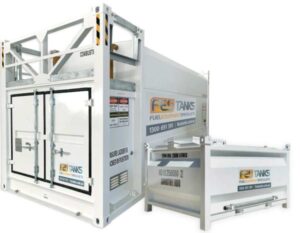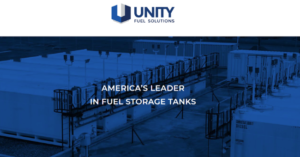Help Reduce Trucking Emissions with Sensible Fuel Storage Solutions
The Australian Trucking Association has weighed in on the Federal Government’s review of climate change policies with a submission focused on making the best use of fuel to support emissions reductions in the transport sector. With one of the oldest trucking fleets in the OECD, the ATA acknowledges low profitability and fuel costs are a significant issue for Australian road freight.
Among other measures, it highlights regular maintenance as a simple way to ensure vehicles continue to meet emissions standards, and argues strongly for maintenance requirements for fuel tax credits to be broadened to include every on-road truck.
We’d argue that getting fuel storage right is at the heart of emissions reduction and vehicle maintenance for transport fleets – here are some of the important points to consider.
Getting the basics right starts with fuel storage
As with anything, an important part of keeping your rig running efficiently and reducing maintenance costs is getting the basics right – and how you store your fuel is one of the often-neglected basics that can make a huge difference to vehicle productivity.
Fuel properties have the greatest effect on the performance of your machinery. What’s more, not only does the health of your fuel storage tank affect the quality of your fuel, but the quality of your fuel also affects the health of your tank.
- Water ingress: Old and rusted tanks, or poorly sealed tanks, can allow significant amounts of water into your fuel. Water can also get in if the tank design allows, for example, a build-up in the spill bucket that can rush in when the tank is opened for dipping.
- Corrosion: Corrosion in your tank can cause a number of problems. Corrosion in your tank means chemical reactions, and it’s likely to be a precursor to fuel spoilage through phase separation or to microbial growth.
Fuel spoilage can affect your tank by:- Introducing microbes that create acidic by-products that will corrode your tank.
- Creating a medium for water to be absorbed.
Best fuel storage options for heavy vehicle efficiency
If you’ve got ageing fuel storage systems, things like regular maintenance, dipping your tanks and draining off excess water are critical. Treating your diesel with a biocide is also a valuable preventative measure.
If your tanks are older and you’re looking to replace them with something that will help you maximise your fuel integrity and your fleet efficiency, here are some of the things you should look for:
- Meeting Australian Standards and legislative requirements. This is a given – you can find out more about fuel storage legislation in different states here. These days it’s worth looking at self-bunded tank options that give you flexibility, save you money on installation costs and are fully relocatable.
- Durable materials to minimise rust and corrosion. Some tank materials and fittings will react with your fuel and reduce its efficiency in your vehicle.
- Easy inspection. Ideally, you should choose a tank that allows for safe and easy fuel testing and easy tank maintenance and cleaning.
- Choose the right size for your fuel turnover. If you’re in the transport industry, you’ll likely have a steady turnover and your tanks will be filled regularly. Keeping them at the optimum level helps minimise reactions with air and water. It’s worth talking to an expert to determine what tank size will suit you best – don’t just go with what you’ve had in the past. Self-bunded tanks come in sizes up to 110,000-litres.
To find out more about the best options for your fleet, get in touch now at www.festanks.com.au



No comment yet, add your voice below!